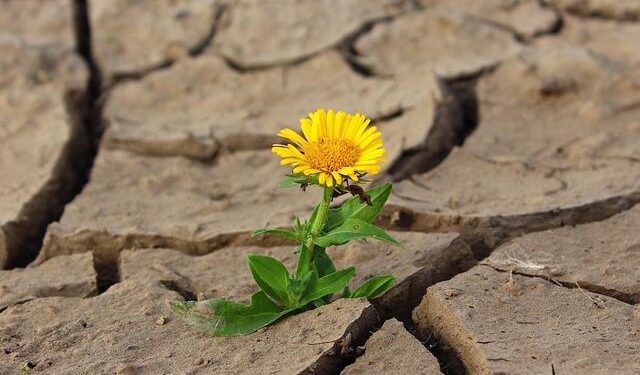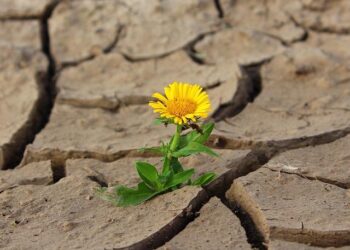A recent surge in drought conditions is exacerbating tensions between humans and wildlife, as predators are increasingly driven from their natural habitats into closer proximity with populated areas. New research highlights how prolonged dry spells are not only stressing ecosystems but also intensifying conflicts between carnivores and local communities. This unsettling trend poses significant challenges for wildlife conservation and public safety, underscoring the urgent need for adaptive management strategies in drought-affected regions.
Drought Drives Carnivores Into Human Habitats Increasing Risks and Tensions
Prolonged dry spells have led to a drastic reduction in the natural prey available for carnivorous wildlife, forcing species such as wolves, leopards, and jackals to venture closer to human settlements in search of food and water. This shift in behavior has escalated encounters with local communities, often resulting in livestock predation and even rare but tragic attacks on humans. Conservationists warn that these increased interactions are fueling mutual fear and mistrust, complicating efforts to protect both human livelihoods and vulnerable carnivore populations.
Human-wildlife conflict under these stressed conditions manifests through multiple challenges:
- Economic Losses: Crop damage and livestock deaths impacting rural incomes.
- Safety Concerns: Heightened anxiety among villagers and herders.
- Conservation Dilemmas: Retaliatory killings leading to declines in predator numbers.
Governments and NGOs are urging the implementation of adaptive strategies, such as improved livestock enclosures and community-based wildlife monitors, to mitigate risks. The table below highlights the recent statistics showing a marked increase in carnivore sightings near human habitats over the past three years.
| Year | Reported Carnivore Sightings | Livestock Loss Incidents |
|---|---|---|
| 2021 | 120 | 45 |
| 2022 | 180 | 75 |
| 2023 | 250 | 110 |
Understanding the Ecological Impact of Water Scarcity on Predator Behavior
As drought conditions persist and freshwater sources diminish, carnivorous species face increasing challenges in locating prey and adequate hydration. This scarcity triggers a notable shift in predator behavior, compelling them to venture closer to human settlements in search of food and water. Such proximity heightens the potential for violent encounters between wildlife and communities, exacerbating existing tensions. Notably, predators such as mountain lions, wolves, and hyenas have been documented expanding their territorial ranges, illustrating a direct ecological response to environmental stressors.
Key behavioral changes observed include:
- Increased nocturnal activity: To avoid human detection, predators become more active during nighttime hours.
- Altered hunting strategies: Carnivores often shift from natural prey to domesticated animals, leading to livestock losses.
- Extended travel distances: Searching for scarce resources pushes predators beyond their traditional habitats.
| Species | Typical Range (km²) | Expanded Range During Drought (km²) | Primary Prey Shift |
|---|---|---|---|
| Mountain Lion | 200 | 350 | From deer to livestock |
| Gray Wolf | 150 | 280 | From wild elk to domesticated sheep |
| Spotted Hyena | 120 | 210 | From wild herbivores to village poultry |
Community-Based Strategies to Mitigate Human-Wildlife Conflict in Drought-Affected Regions
In drought-stricken regions, communities are pioneering innovative approaches to reduce clashes with carnivores forced closer to human settlements in search of water and prey. Local groups, often in collaboration with conservationists, have implemented early warning systems using mobile alerts and community patrols to monitor wildlife movement. These strategies enable timely responses to potential encounters, minimizing property damage and safeguarding residents. Additionally, the introduction of livestock enclosures fortified with solar-powered lights and sound deterrents has proven effective in deterring nocturnal predators without harming the animals.
Education and stakeholder engagement also play a pivotal role. Workshops that emphasize coexistence and proper resource management equip villagers with practical tools like:
- Improved water storage techniques to limit dry-season wildlife roaming
- Use of locally sourced natural repellents to keep carnivores at bay
- Community-led monitoring of vulnerable zones to track seasonal shifts in carnivore patterns
Such holistic, community-driven efforts have led to measurable declines in livestock losses and increased tolerance towards carnivores during prolonged drought periods.
| Strategy | Outcome | Region |
|---|---|---|
| Solar-lit livestock pens | 60% livestock loss reduction | East Africa |
| Mobile wildlife alerts | 40% fewer human encounters | South Asia |
| Community patrols | Improved response times | Southern Africa |
Concluding Remarks
As drought conditions continue to worsen across affected regions, the escalating proximity between carnivores and human populations underscores an urgent need for strategic intervention. Addressing this intensifying human-wildlife conflict will require coordinated efforts in wildlife management, community education, and sustainable resource planning. Only through proactive measures can the delicate balance between preserving biodiversity and ensuring human safety be maintained, as both face increasing pressures from a changing climate.































